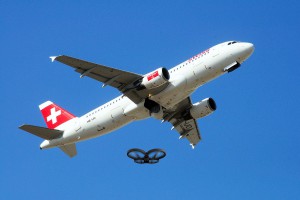
The Wall Street Journal reports that Don Walker, an FAA official, said that the FAA plans to utilize automatic dependent surveillance-broadcast technology, or ADS-B, a system that planes use to determine their location via satellites and send that information to air-traffic controllers. Eventually, location data may also be sent directly to other aircraft.
Saying that delivery and other commercial drones “are likely to have ADS-B receivers,” Walker explained the plan: receivers would not broadcast the drones’ location, but would enable drones to sense and avoid manned aircraft. Mr. Walker explained the system to RTCA Inc, an industrywide standards-setting group working with the FAA on technical standards. Walker is the FAA representative to the group, but an FAA official said Tuesday that the agency “has not taken a position regarding” the issue, and isn’t planning on any particular technology solution.
While satellite tracking may be one solution to the problem, it is not the most elegant – or the least expensive, and it is unclear why the FAA representative would have chosen that technology to focus on. NASA and technology partners have been working on sophisticated air traffic control systems for some time to assist communication between drones and manned aircraft; earlier this month NASA representatives said that the first phase of their system was “ready to be deployed.” Alphabet (Google’s parent company) and Amazon, expected to be a major player in worldwide drone delivery, support the NASA plan for an automated air traffic control system calculating flight paths.
Amazon said in a statement responding to the satellite tracking proposal that it wants an approach based “on safety and performance outcomes” allowing for flexible technology solutions, as “locking into a specific prescribed set of technologies…will quickly become outdated.”
Michael Drobac of Small UAV Coalition, a drone advocacy and trade group, told the WSJ that an ADS-B mandate may be an unreasonable regulatory approach. “ADS-B is one technology, but that doesn’t mean there couldn’t be other technologies that could be as efficient or as effective,” he said.

Miriam McNabb is the Editor-in-Chief of DRONELIFE and CEO of JobForDrones, a professional drone services marketplace, and a fascinated observer of the emerging drone industry and the regulatory environment for drones. Miriam has penned over 3,000 articles focused on the commercial drone space and is an international speaker and recognized figure in the industry. Miriam has a degree from the University of Chicago and over 20 years of experience in high tech sales and marketing for new technologies.
For drone industry consulting or writing, Email Miriam.
TWITTER:@spaldingbarker
Subscribe to DroneLife here.